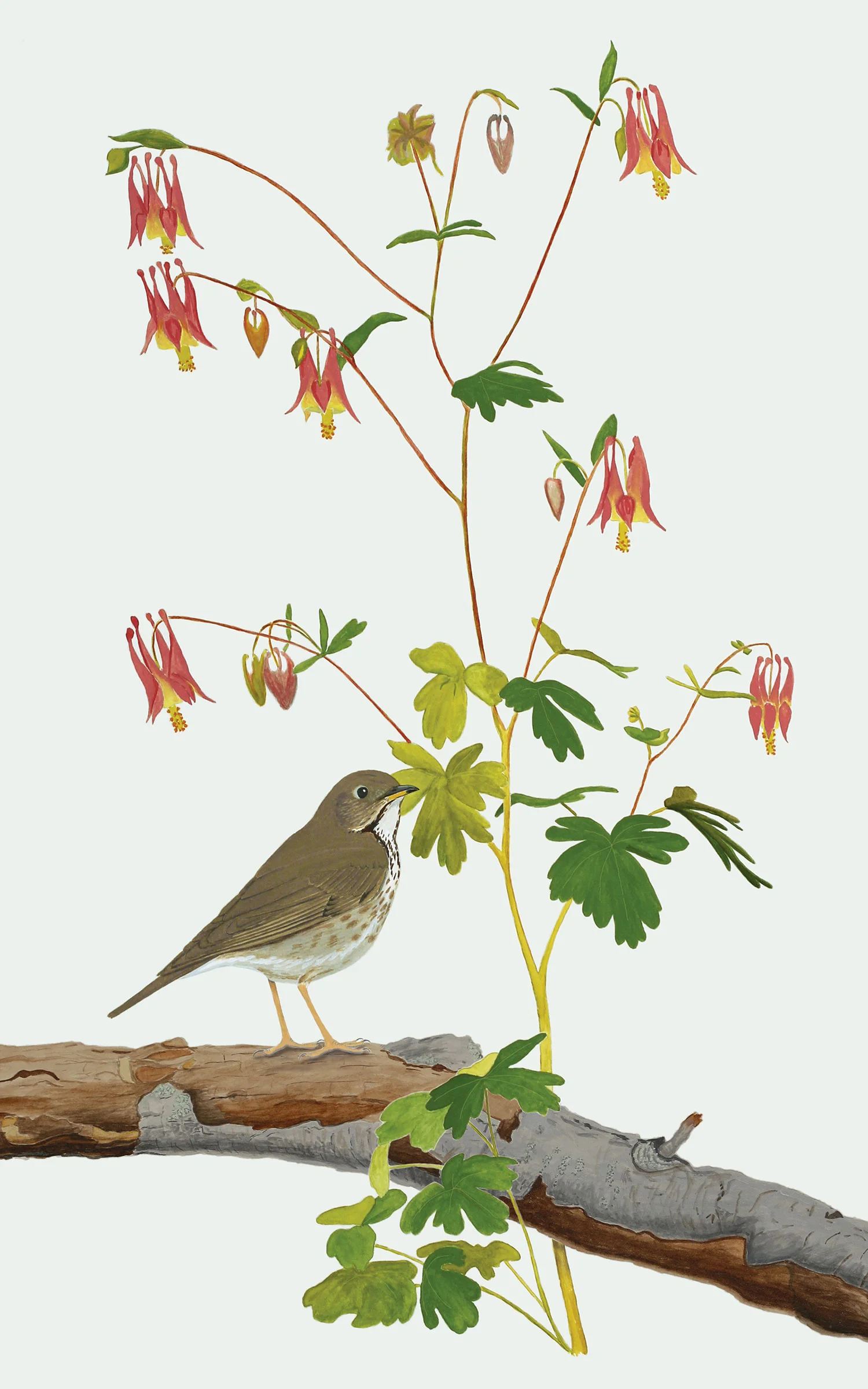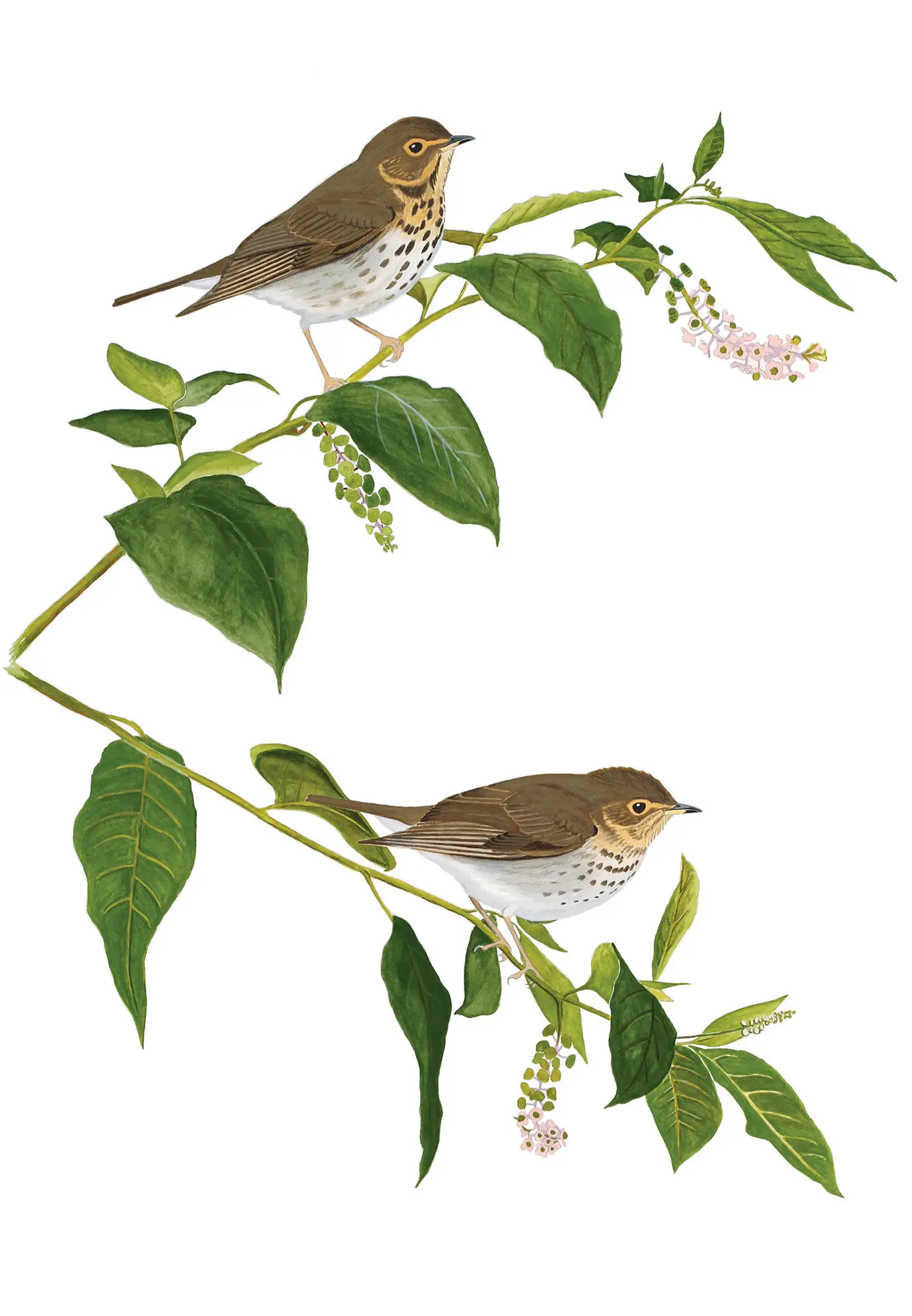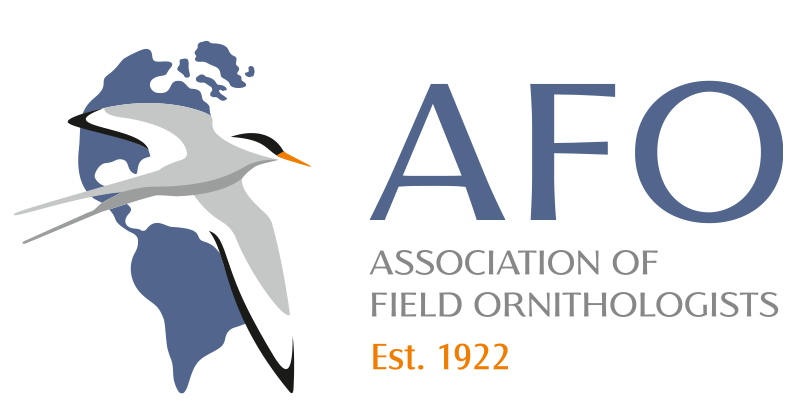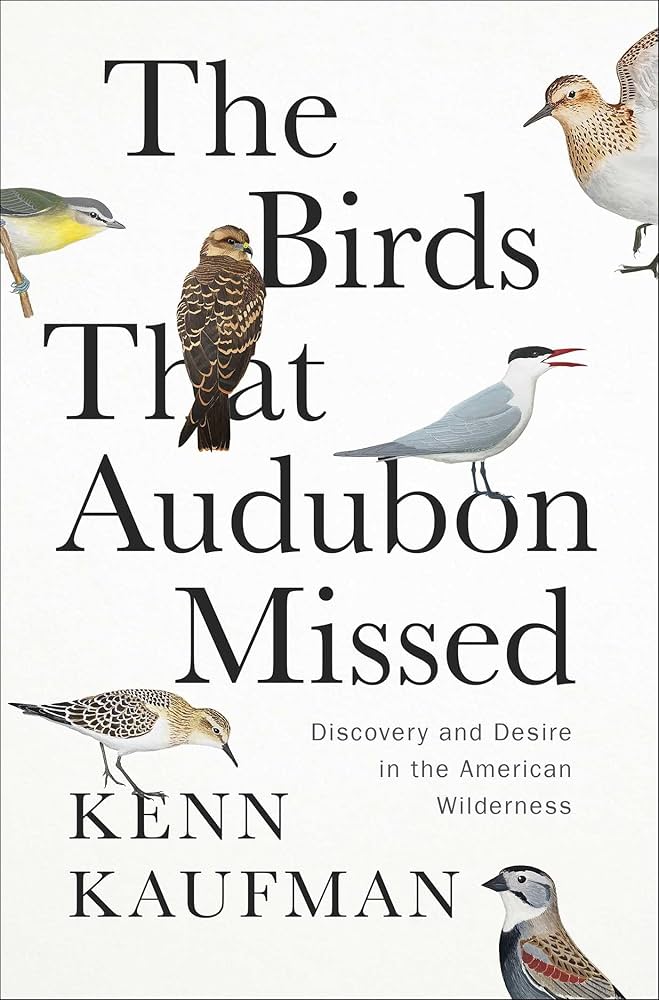https://www.simonandschuster.com/books/The-Birds-That-Audubon-Missed/Kenn-Kaufman/9781668007594. Kenn Kaufman. 2024. Avid Reader Press, an imprint of Simon & Schuster, LLC, New York, NY. ISBN 978-1-668-00759-4 Hardcover ($32.50 USD); ISBN 978-1-668-00759-4 (Paperback); 978-1-668-00761-7 (E-book).
“This is the most challenging book I’ve ever tried to write,” Kenn Kaufman candidly admits in The Birds That Audubon Missed (371). As a reviewer, I empathize; it’s also challenging to review. Wide-ranging in scope, it defies easy categorization, existing as history, biography, natural history, literary criticism, memoir, meditation, and travelogue, with frequent discourses on topics such as systematics and taxonomy, ornithological methodology, avian nomenclature, the mechanics of book publication, and fine points of bird identification.
Juggling these myriad approaches and threads would test even accomplished writers. Fortunately, Kaufman is well-suited for the task, having written or edited thirteen books, including memoirs, field guides, birding manuals, and reference works, along with countless articles. His writing style is appealing and refreshing; his prose often soars. Dense and insightful, his book rewards careful reading.
Its title, though, is both intriguing and perplexing. It may deter readers familiar with John James Audubon, a controversial figure who engaged in shameless self-promotion, exaggeration, plagiarism, and scientific fraud, and who owned enslaved persons. Kaufman rightly castigates Audubon on all these counts, but he also offers a more balanced assessment, one which acknowledges who he was “without either celebrating or vilifying” him (300). As an ornithologist, Audubon “did make real discoveries and contributions, and took part in disseminating knowledge turned up by others” (303), Kaufman asserts, offering ample evidence to support this.
The title also misrepresents the book’s story. Kaufman does discuss “the birds that Audubon missed,” but also those he found—and not only Audubon, but also the discoveries and errors of his predecessors and contemporaries, especially Alexander Wilson. It was Wilson, more than anyone else, whom Audubon at first tried to emulate, but then strove to surpass so that he could lay claim to having discovered the most birds. Audubon’s ambition shaped the course of American bird study through much of the nineteenth century.
Kaufman’s discussion of early American ornithologists draws upon recent biographies and his own reading of “thousands of pages of publications from the 1700s and 1800s” (371). His book complements and expands upon other historical studies, especially Scott Weidensaul’s Of a Feather: A Brief History of American Birding (2007). Marshaling his vast knowledge of American avifauna, Kaufman analyzes how, where and why Audubon and others “missed” or misidentified many species through confusion, tunnel vision, inadequate knowledge, bad luck, or other factors. Here, Kaufman’s knack for storytelling shines through—as, for example, when he examines their treatments (or mistreatments) of sparrows, thrushes, warblers, shorebirds, and other species.
Most significantly, the book’s title obscures the real purpose behind Kaufman’s book. This is an intensely personal, introspective, and honest account, in which a master birder on the cusp of his eighth decade assesses what watching birds has meant to him. “I was obsessed with discovery” as a child, Kaufman recounts. “Once I started focusing on birds at the age of six, I wanted to find them all, to learn what they were called” (20). He became a lifelong student of birds, who came to “see these creatures, not only through the lens of my own experiences, but also with the benefit of thousands of written words and published experiences of generations of dedicated naturalists” (15). Yet that accumulated wisdom could be a double-edged sword. “It’s a bittersweet fact of life for naturalists that we take to the field primed for discovery,” Kaufman admits, but often we “walk right past things that would have been new. In most cases, we’ll never know what we missed” (275).
In tracing his lifelong birding journey, Kaufman emulates—intentionally or otherwise—his mentor and hero, Roger Tory Peterson. “Alert and perceptive,” as Kaufman writes, Peterson was also “accessible, unassuming, looking at birds with the rest of us, but still awe-inspiring in his deep level of experience and knowledge” (221, 313). Hearing Peterson discuss some of Audubon’s discoveries “captured my imagination,” Kaufman observes, “because [it] touched on bird study in the past, back far beyond his own lifetime” (314). Taking a cue, Kaufman engages in a thought-experiment to understand the mindset of early American naturalists. He imagines himself traveling back in time to when legions of birds were “genuinely if temporarily unknown, waiting to be discovered or rediscovered,” and accompanying these explorers as they go “hiking through those grand forests [and] paddling down those wild rivers” (16-17, 86). “Looking back,” he writes, “it’s hard to avoid feeling a pang of envy” (17). And yet, he admits, the experiment falls short, because he can’t liberate himself from all he knows. “As much as I’d like to do so, I can’t put myself in this mental mode for long. After decades of birding, my mind automatically fills in the blanks” about the history and diversity of American avifauna (87).



From left to right: Snail Kite (Rosthramus sociabilis), Gray-cheeked Thrush (Catharus minimus) and Swainson’s Thrush (Catharus ustulatus). Illustrations by Kenn Kaufman.
In another experiment, after musing about how Audubon might have depicted birds he missed finding, such as Caspian Tern, Snail Kite, and Philadelphia Vireo, Kaufman decides to paint them by attempting to emulate Audubon’s style. His effort to “channel the illustrator” unfolds in several interludes and in a selection of colored plates. Ultimately, Kaufman became dissatisfied and abandoned the project to resume his own artistic growth. Yet the results are fascinating and compelling.
Above all, Kaufman’s book challenges all birders—and anyone who enjoys spending time outdoors—to emulate him in “[re]framing life” like he did as a boy, when everything was fresh and new and ripe for discovery. “I am one of those lucky people” who has preserved that childlike sense, he writes. “For us, the wonders of nature never disappoint and they never end, and every time we find something new, we want to know what it is. We remain as children, eyes wide, expecting miracles around every corner” (20).
Published by Avid Reader Press, an imprint of Simon & Schuster, The Birds That Audubon Missed stands as one avid birder’s eloquent reminder to “press” forward and open our eyes and our minds to see what we otherwise might miss.
John C. Rumm
(Retired) historian and researcher on the histories of ornithology and birdwatching
Header photo: Swainson’s Thrush (Catharus ustulatus). Photo by Marc Guyt via Getty Images.
Suggested citation:
Rumm, J. Review of the book The Birds that Audobon Missed: Discovery and Desire in the American Wilderness by Kenn Kaufman. Association of Field Ornithologists Book Review. https://afonet.org/2024/08/the-birds-that-audobon-missed-discovery-and-desire-in-the-american-wilderness/.
If you are interested in contributing a book review, or if there is a book you would like to see reviewed on our site, you can contact our Book Review Editor, Evan Jackson at evan.jackson@maine.edu

